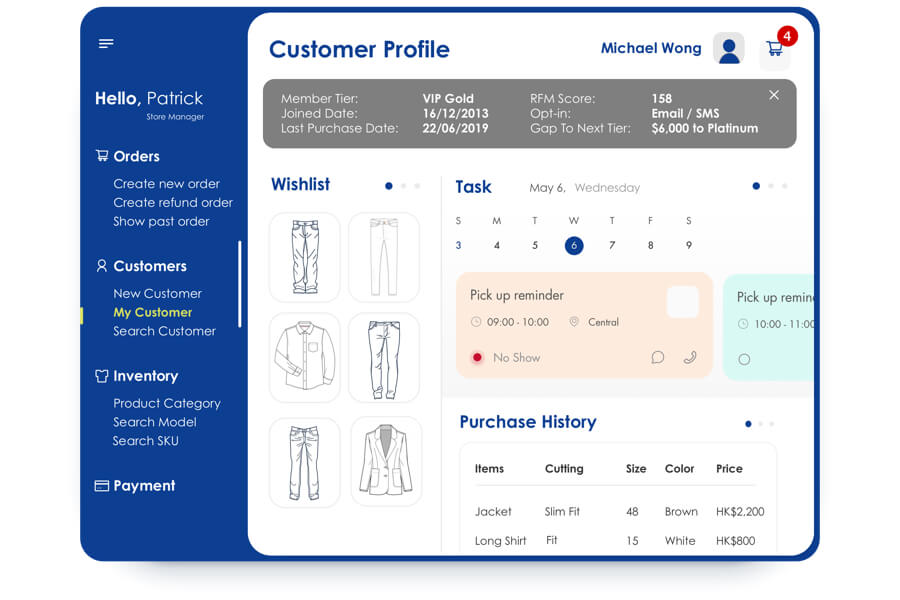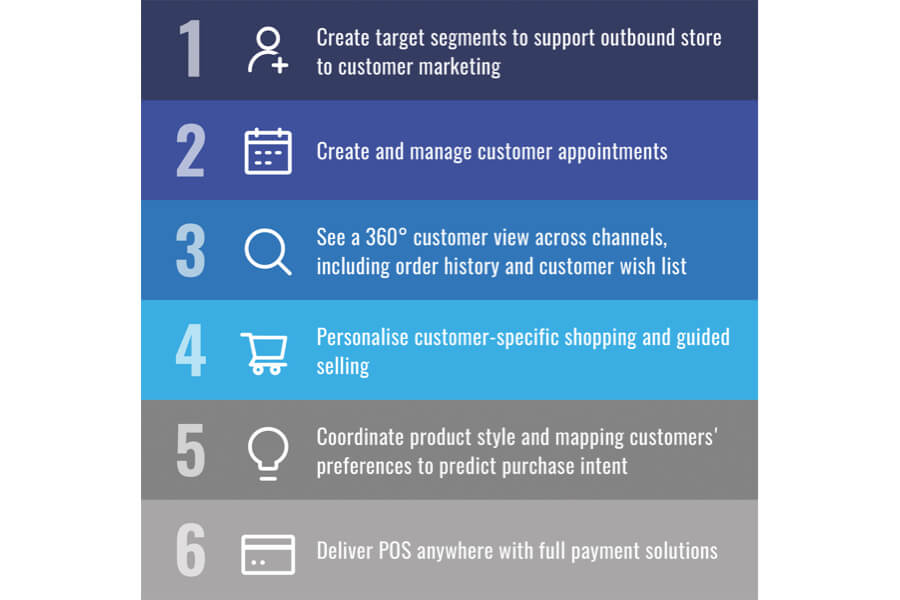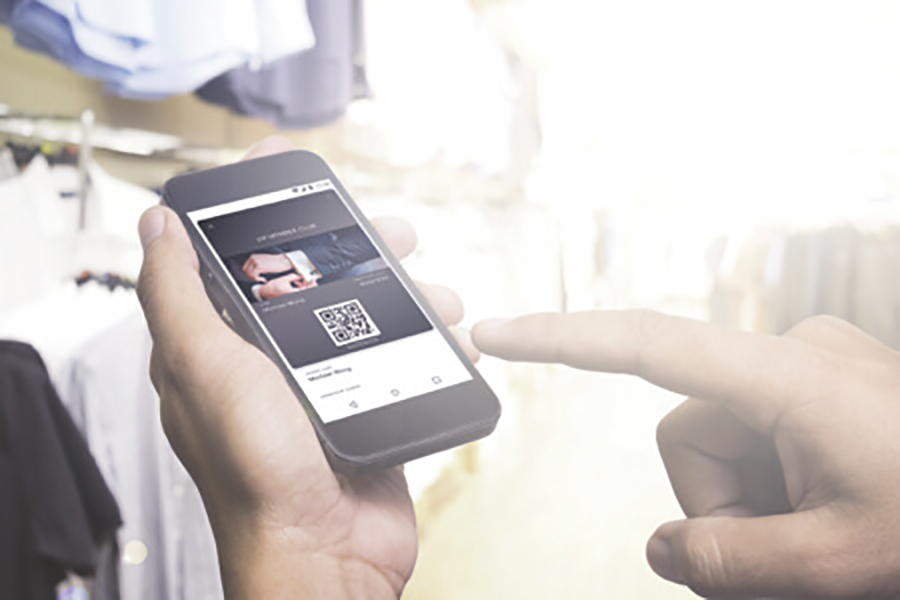The customer journey is often looked at in rather stiff terms, as a chart moving from point to point in a sterile manner. But in reality, each individual customer journey actually tells an interesting story with stakes, goals, and ups and downs, hopefully resulting in a happy ever after for the loyal customer.
This is especially apparent when jumping in medias res to the most exciting central part of the story, the in-store experience with clienteling strategies.
Functioning as a tale of its own, the shopper’s quest to find what they’re seeking, and to walk out of a store with a smile, hangs in the balance. And, the hook this plot’s result largely hangs on, is the quality of the in-store customer experience.
In this Master Report, XGATE provides us with such a narrative of a shopper in a retail store and their hunt for an outfit. The twist being that the store staff have a clienteling portal on hand to facilitate the shopper’s experience, radically changing the story path at each step.
XGATE’s walkthrough demonstrates why it’s important to understand the implementation of new retail technology at the human level, and how it works in practice, rather than listing out a variety of functions. Only then can customer journeys be crafted in such a manner as to leave the shopper feeling like the brand is their hero.

Enabling the experience
Technology today is changing the very nature of relationships between brands and consumers. Marketers are constantly looking for ways to improve efficiency through automation and technology. Ultimately, every brand will develop its digital competency, which raises the question: “What sets you apart from your competitors?”
The answer lies in the connection between the customer experience and business profitability. Research from Temkin Group reports that a moderate improvement in the customer experience will impact the revenue of a typical US$1 billion company to an average of $775 million over three years.
Instead of discussing the customer experience in general, this article aims to provide an in-depth understanding of using clienteling as a retailing tool to recreate an exceptional in-store brand experience. Specifically, clienteling will enable your sales associates to deliver the kind of personalised customer experiences that consumers still crave.
To understand the concept of clienteling, imagine having a clienteling portal on an iPad and putting it in the hands of a sales associate to empower them with customer data to create a personalised in-store shopping experience.
Life of Patrick
Meet Patrick Lee, a store manager for an apparel brand.
Patrick starts his day accessing his clienteling portal to search for a list of VIP customers whom he had not been in contact for a while. He called and invited them to a special VIP promotion.

Michael Wong, a VIP on the list, was contacted and was interested to drop by for the VIP promotion.
At the store, Michael was greeted by Patrick with a friendly: “Welcome sir, you’re here for our VIP promotion? Do you have our member e-card?” Michael showed the e-card from his Apple Wallet. Patrick scanned the QR code using the clienteling portal and pulled out his profile details.
Instantaneously, on the clienteling portal, Patrick obtained a 360-view of Michael across channels, including order history, profile, and wish list.
Patrick said: “Mr Wong, we have several new arrivals and we do have them in your sizes for most of the pieces. Let me show you at the men’s section.”
Michael delightedly browsed the items and began trying them on. Eventually, he picked two jackets, three white shirts, and two pairs of jeans before asking Patrick to confirm the sizes again.
Patrick answered: “Mr Wong, you’re size 48 jacket, size 15 for the shirt and 33-inch waist for your jeans. Let me see what we have in stock.”
Minutes later, Patrick returned with the grey and black jackets, and the shirts: two in white and one in blue. But there was an issue.
Patrick explained: “Mr Wong, we have your size for the jackets and the two white shirts. However, for the third white shirt, I am sorry, but we actually only have that style of cut in your size, 15, in a baby blue.”
Patrick displayed an image on the clienteling portal of a co-ordinated brown jacket with the baby blue shirt.
Patrick said: “Mr Wong, I recommend the blue shirt because it matches well with the brown jacket you bought previously.”
Michael liked the matching outfit. Then he asked for one size larger for the denim jeans. Patrick checked the stocks on the portal and informed Michael that they had no stock for the 34-inch waist.
“Our new stocks arrive next week. I can see you’ve marked those jeans on your wish list on our online store. You must love denim,” Patrick said, adding: “Mr Wong, should I wrap up the jackets and shirts for you? Would you also want the blue shirt as well? You look charming in that.”
Michael replied yes to the baby blue shirt. He then signed on the iPad to pay for the items and informed Patrick to contact him when the jeans arrived.
An email receipt was sent to Michael for his records, and Patrick used the clienteling portal to set a reminder to contact Michael when the stock was in.
A week later, Patrick got an alert from the clienteling portal that the size 34-inch jeans were in-store and called Michael to arrange an appointment time to pick them up.
Michael arrived at the store and showed his VIP member e-card. Patrick used the clienteling portal to scan the QR code and pull out the order’s details.
Patrick said: “Welcome back Mr Wong. Do you want to try on the jeans once more?”
Michael tried them on and proceeded to pay by signing on the iPad. Patrick bid Michael farewell as he left the store: a satisfied customer with two new pairs of jeans.
Later that week, Michael used his social messaging app to text Patrick and thank him for the great customer service.
Patrick received the message on his clienteling portal and set a reminder to send a personalised birthday message to Michael in December.
Moral of the story
Clienteling strategies have ignited the magic of personalised retailing to enhance the in-store brand experience and customer loyalty. At XGATE, we believe such capabilities are possible with advances in CRM and loyalty marketing, integrating data across multiple systems, including CRM, loyalty,
POS, order management, eCommerce, and communication channels – mobile technology, and omni-channel services.
Ultimately, three essential factors – customer insights, personalisation and fulfilment – will drive the success for clienteling by offering a unique brand experience at different touch-points of a customer’s shopping journey.
Businesses looking to develop their own clienteling portal should consider the different functions (as illustrated in the graphic diagram) required by sales associates to deliver customer experiences distinctly crafted for a brand.
Empowering our sales associates with well-developed clienteling tools to target segments, create personalised services, and offer seamless fulfilment for shoppers will soon be the norm for retail marketing. This necessity allows brands to make technology feel more human and blend it with the most meaningful aspects of the customer experience. That’s the new future.




